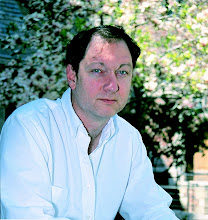Peter Bronson with the Cincinnati Enquirer has a nice piece about visiting a gun show
As I waited in the parking lot for the doors to open at 9 a.m., two guys pulled up next to me in a black Chevy pickup. They wore camo ball caps, jeans and sweat shirts. Nothing unusual there - until one slung a rifle over his shoulder as they headed for the door.
Anywhere else, people would grab their cell phones and dial 911. But this was the Pro Gun Show at the Roberts Centre in Wilmington. Dozens of guys were toting shotguns, rifles and handguns, not to mention swords and knives.
It looked like a not-very-well regulated militia from Red Dawn, reporting for duty.
As the line spilled out the door, each gun was carefully inspected and tagged to certify that it was unloaded, and safe to sell or swap.
"No cameras," said a sign. It occurred to me that I could get kicked out for carrying a Kodak, but nobody would blink if I flashed a Glock. Apparently, gun owners and dealers value their privacy. . . .
Labels: GunFreeZone, GunShowRegulations






